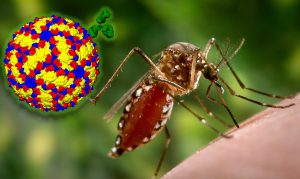Sanofi, a French pharmaceutical giant, recently announced that the US Food and Drug Administration (FDA) has accepted the dengue vaccine Dengvaxia’s Biologics License Application (BLA) and granted priority review. The vaccine is used to prevent dengue fever caused by all four serotypes of dengue virus, specifically for children aged 9-45 years, adolescents and adults. The FDA will make a final review decision by May 1, 2019. If approved, Dengvaxia will be the first and only medical prevention tool for dengue in the US market.

Introduction of Dengvaxia
Dengvaxia was first approved in December 2015 as the world’s first dengue vaccine product. Dengvaxia is a live attenuated vaccine that combines the yellow fever virus non-structural genes with four serotypes of dengue virus structural genes by recombinant techniques. To date, the vaccine has been approved by 20 countries worldwide. In Europe, the European Commission is expected to approve Dengvaxia’s marketing approval application in December this year.
Dengue fever is prevalent in Puerto Rico and Virgin Islands. In 2010, Puerto Rico experienced the largest outbreak, confirming more than 12,000 cases of dengue fever. After that, the incidence rate remained high, especially in 2012 and 2013. Dengue fever has caused a serious health and economic burden in Puerto Rico, with an estimated annual total cost of $160.2 million.
Dr. David Greenberg, Regional Medical Director for Sanofi Pasteur North America, said that Sanofi is committed to reducing the global burden of dengue fever. Dengvaxia has been evaluated in a wide range of clinical development projects involving more than 40,000 volunteers. The scale survey has been followed for up to 6 years. These volunteers live in 15 countries with different ages, geographic regions, epidemiology, ethnicity, and socio-economic background.
Introduction of Dengue
Dengue is an acute insect-borne infectious disease caused by dengue virus by the transmission of mosquito virus. Clinical manifestations include high fever, headache, muscle, joint pain, rash, bleeding tendency, lymphadenopathy, decreased white blood cell count, thrombocytopenia, etc. Dengue fever is one of the leading causes of children death in Southeast Asia.
Dengue fever is a mosquito-borne disease commonly known as “breakbone fever” that threatens nearly 3 billion people worldwide and is endemic in Asia and Latin America. According to the World Health Organization (WHO), more than 100 million people are infected with dengue every year. Dengue fever is often misdiagnosed due to a wide range of clinical symptoms ranging from mild non-specific to life-threatening complications, and the limitations of surveillance systems are also responsible for inadequate reporting of dengue cases. Globally, 500,000 people (including children) suffer from dengue hemorrhagic fever (DHF) every year, and timely access to appropriate medical care is critical to reducing the risk of serious dengue death.
The WHO has set a goal to reduce dengue fever mortality by 50% and incidence by 25% by 2020. At present, there is no targeted treatment for dengue hemorrhagic fever. Dengue fever is triggered by four different serotypes of dengue virus, and there is no immune effect between the virus strains, so it can be repeatedly infected by different serotypes of dengue virus. And its uniqueness is that the second infection is often more severe than the first time, which means preventing the reinfection of another serotype of dengue can help reduce the risk of individual dengue fever and reduce the overall medical expenditure associated with dengue hospitalization.
